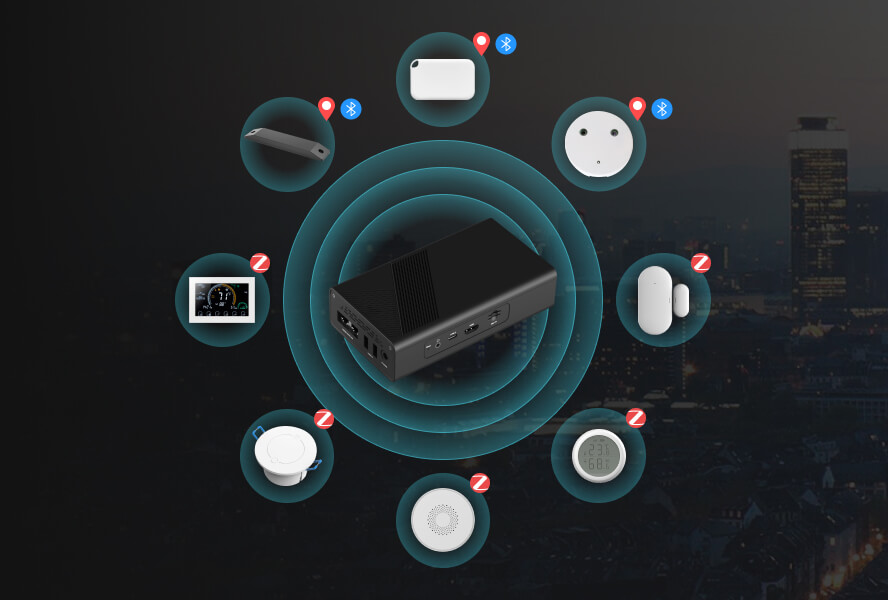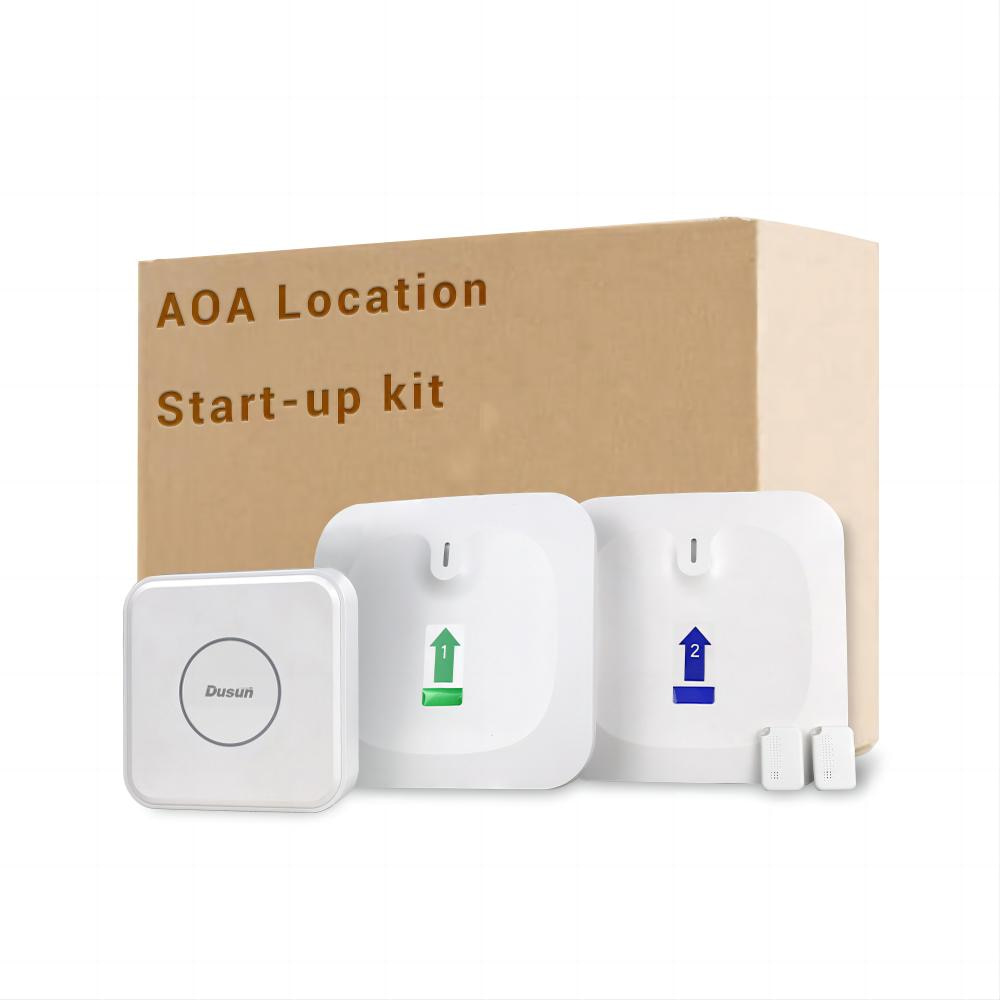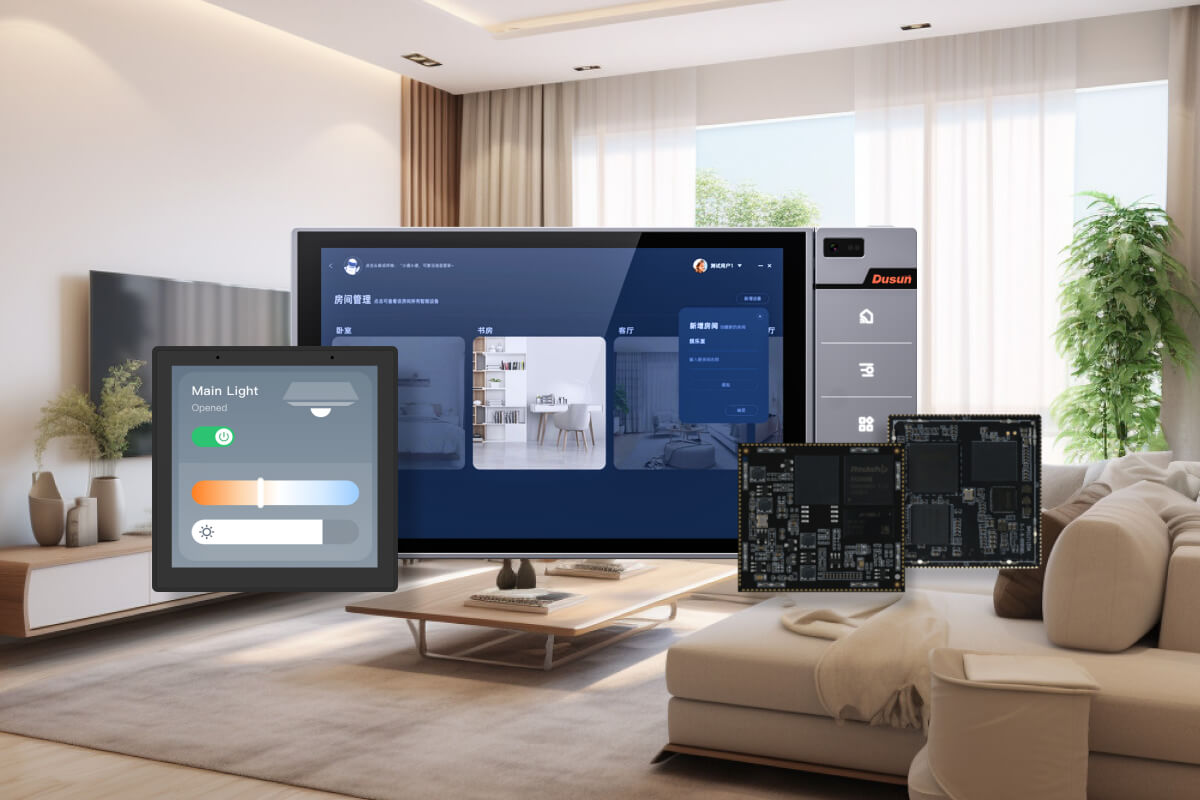Edge computing gateways are critical in smart buildings because they bring efficiency, intelligence, and responsiveness near the data generation and utilization points. This short data link enables real-time decision-making, enhances data security, reduces data transmission bandwidth to the cloud, and introduces automation.
Therefore, edge computing is critical in smart buildings, and we’ll look at its importance, architecture, challenges, applications, and more. Let’s get right into it!
Importance of Edge Computing In Smart Buildings
Better Reliability
With edge computing gateways, the computational resources are distributed in the building, reducing or even eliminating the need for centralized computing systems.
Having a centralized system to manage all aspects is unreliable because network faults or maintenance will take all the smart features offline. But a distributed system does processing locally and will not be affected by outages elsewhere in the building.
Reduced Latency
Since these gateways enable real-time data processing near the edge, they reduce network latency; the data only travels a short distance. Also, they reduce the data transmitted to the cloud, and a lower load further lowers the latency, resulting in better responsiveness.
Low latency and quick responses are vital for smart building applications involving critical aspects like security.
Data Privacy and Security
By processing and analyzing data locally, edge computing gateways reduce or eliminate the need to transmit sensitive information to the cloud. The risky part of any IoT architecture is the data transmission to the cloud via a WAN. Therefore, edge computing enhances data privacy and security by handling most of the processing locally.
Enhanced Scalability
It is easy to deploy automation or control systems to some computing gateways in the distributed system or even replace them with new, more capable hubs. This enables efficient resource use in smart, large-scale buildings.
Smart Building Architecture Using Edge Computing Gateways
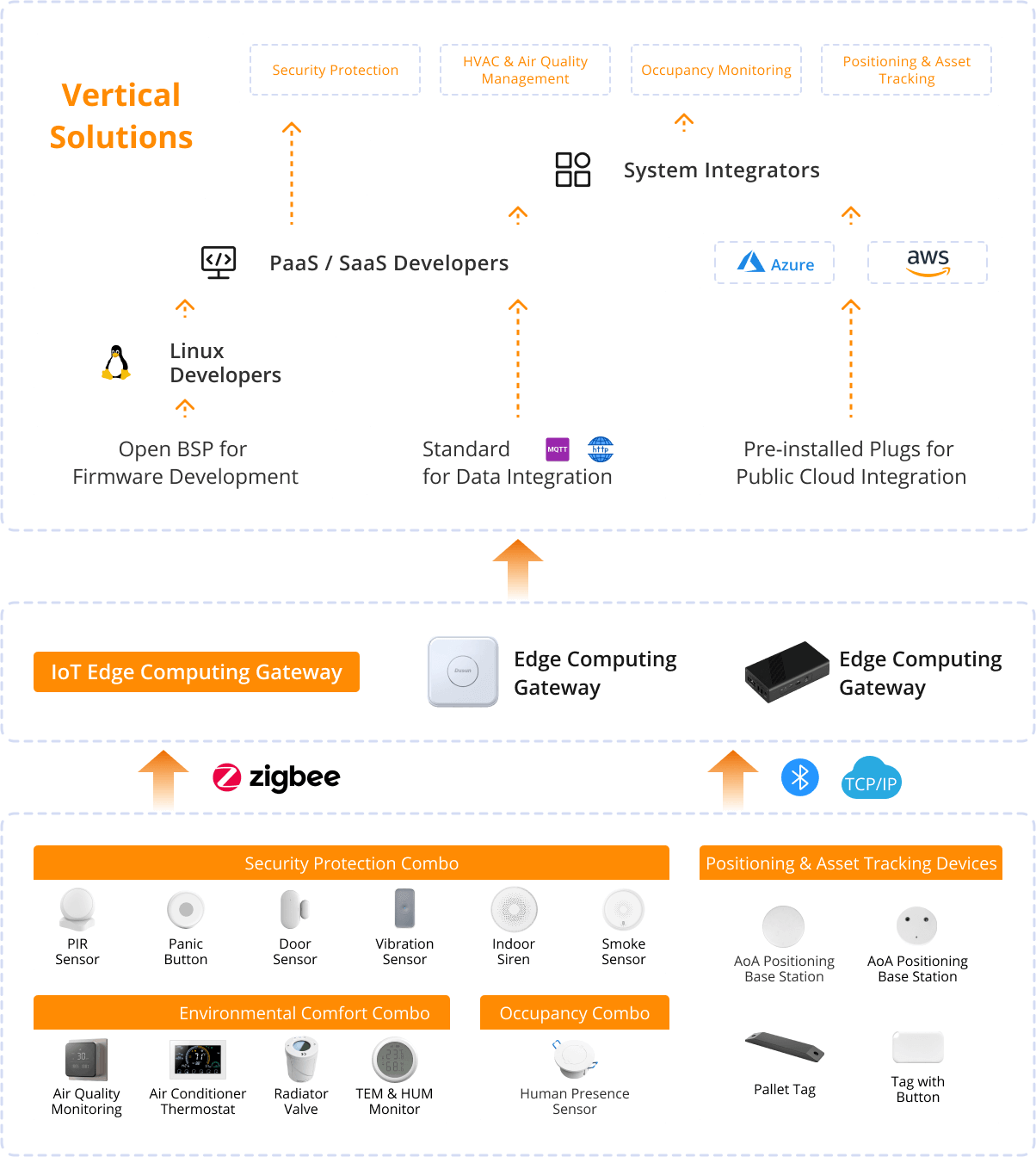
The smart building architecture running on edge computing gateways has the IoT devices at the bottom of the stack. They include sensors, base stations, actuators, panic buttons, etc., and their task is to collect data processing/analytics. These devices also implement the instructions from the gateways or users (via the cloud).
Edge computing gateways sit above the sub-devices of the stack to receive and process the data streaming in. These distributed gateways in smart buildings process as much data as possible locally and automate some functions to reduce the load sent across the WAN to the cloud.
The data sent to the cloud undergoes further analysis to present meaningful information, reports, graphs, and remote control options to the user via mobile applications.
Practical Applications of Edge Computing Gateways in Smart Buildings
Asset Tracking
Asset tracking in a smart building requires AoA positioning base stations placed strategically within the building to detect the objects being tracked. This application requires an edge computing gateway to run a positioning engine for locating assets like inventory in warehouses, equipment in a factory, or vehicles when moving within a defined area.
Personnel Tracking and Access Control
The same positioning setup implemented for asset tracking can also work for personnel access control. Staff will have beacons in the form of BLE key fobs, wearables, wristbands, cards, or tags, while the BLE gateways will be installed in fixed locations and given specific coordinates.
This solution can be tweaked a little to handle other functions like checking employee attendance (clock-in systems) and safety positioning after marking safe and unsafe areas.
Visitor Flow and Proximity Marketing
A smart building should keep tabs on the customers flowing in and out, a function best carried out using an AoA+vision engine. This solution needs an AoA positioning base station with cameras, such as the DSLA-N400. This base station requires an edge computing gateway running a positioning engine.
Comfort Management
A comfortable smart building should self-regulate its air quality and humidity levels or allow remote adjustment.
Edge computing gateways should run automation apps to open or close the ventilation system based on the detected gas levels. They can also activate or deactivate the HVAC system, heat pump, or thermostatic radiator valve, depending on the data streaming in from the temperature and humidity sensors.
Security/ Intrusion Detection
Intrusion detection requires end nodes like PIR motion sensors, door/window sensors, and window vibration sensors, as well as a panic button for emergency activation and a siren for deterrence.
Edge computing gateways coordinate the functions of all these end nodes, collecting data from the sensors and panic buttons, then using it as a trigger to activate the siren and send alerts to the relevant security personnel managing the building.
Other applications include:
- Safety
- Occupancy management
- Energy efficiency
- Water usage monitoring
- Structural Health Monitoring (SHM)
Challenges of Using Edge Computing Gateways in Smart Buildings
Edge Device Management
Managing multiple edge computing gateways can be challenging, especially when maintaining the devices, installing software updates, or making configuration changes.
Data Processing and Analytics
Edge computing gateways have their limits, so it is important to find the optimal balance between the data to process locally and the one to send to the cloud. The goal should be to optimize the usage of the available computational resources.
Network Connectivity
Since most of the data will be moving between the sub-devices and the edge computing gateway, the connection between them should be reliable and have a high bandwidth. If you’ve implemented a mesh network, the connection between the sub-devices should also be seamless and reliable.
Integration with Existing Systems
Integrating edge computing devices into the network, such as when upgrading the gateways or switching to better-performing units from different manufacturers, can present integration issues. Multiply these by the number of gateways in the distributed system, and it can be hectic.
What To Expect From Edge Computing Gateways in Smart Buildings In The Future
Artificial Intelligence
Since they already have computing resources, these gateways are likely to run machine learning and other AI algorithms to enable automation and better real-time decision-making.
Interoperability and Standardization
There are already efforts to standardize the communication and data exchange processes/protocols between edge computing gateways and IoT devices from different manufacturers. Once this happens, it will be easier to integrate edge computing gateways into existing smart building infrastructure because the systems will be interoperable.
Edge-to-Cloud Synergy
Edge computing devices and the cloud (servers) handle the data processing, analytics, and automation processes in the IoT infrastructure. However, they operate at different levels in the architecture, so these should collaborate better in the future to balance the processing load, optimize data flow, and even enable hybrid analytics.
How Our Smart Building Hardware Solution Benefits Your Business
One-Stop Hardware Solution
Smart building solutions require more than just a gateway. You’ll need various sensors, valves, actuators, thermostats, etc. Buying these components from different vendors or manufacturers can present integration challenges.
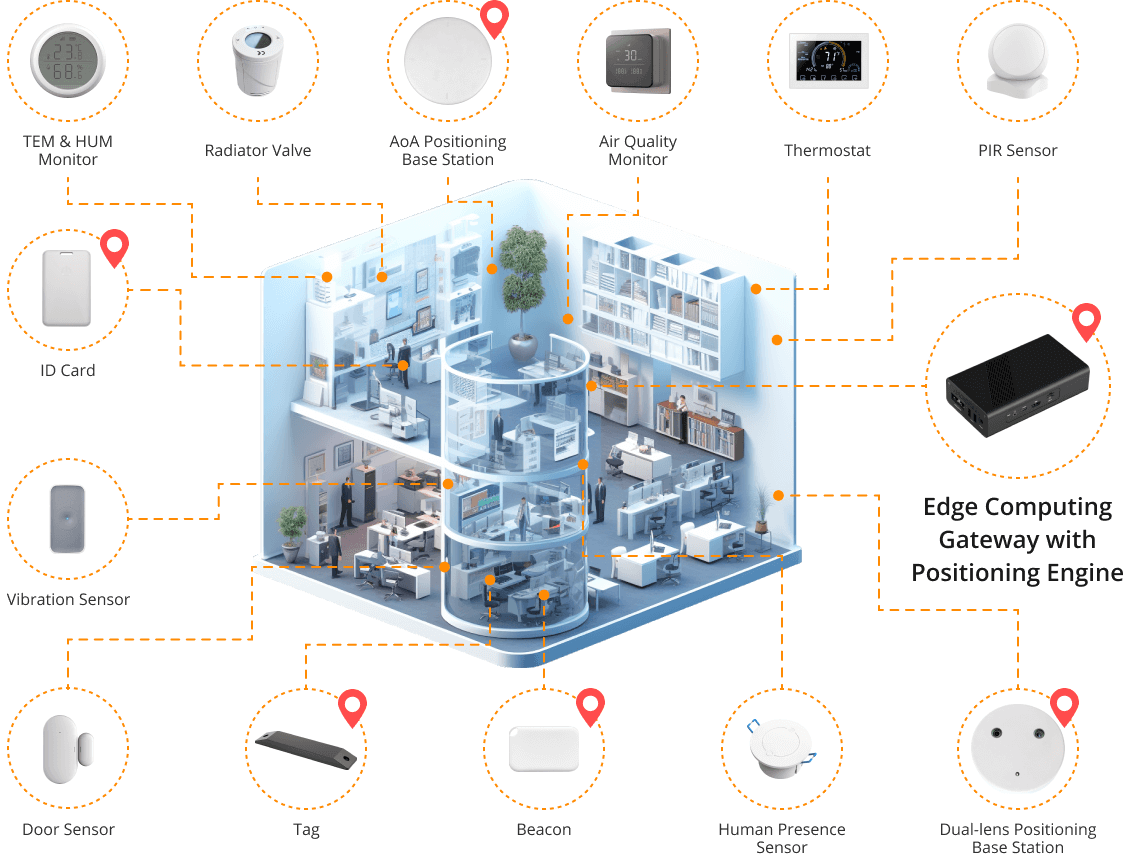
But we provide vertically integrated products that work together seamlessly to make the IoT smart building solution reliable and quick to launch to market.
Off-the-Shelf, ODM, or OEM
Depending on your project requirements or expertise, you can buy ready-made smart building gateways and end nodes, give us your designs for fabrication and assembly, or let us handle the entire production process for your hardware.
Regardless of the process, all the resulting hardware will have full certifications, which include CE, RoHS, FCC, CB, RCM, and IC. Additionally, they will have the SDK kit, user manual, and quick start guide documents ready to help you get started.
Programmable Edge Computing Gateway
We sell fully programmable gateways that have an open BSP. So you can customize the firmware to suit the project’s required functionality and migrate or build applications to run on these devices.
DusunIoT Edge gateways provide multiple connectivity options, and offer options with built-in clients to connect to AWS and Azure cloud services.
- ARM® Quad-core
- Ethernet/Wi-Fi/LTE
- Zigbee/Z Wave/LoRaWAN/Modbus
- Wide Bandwidth (Gigabit)
- Linux & OpenWrt, Android
- Azure IoT & AWS IoT Cloud Ready
- Encryption Technology
- Development Resources & FAE Support
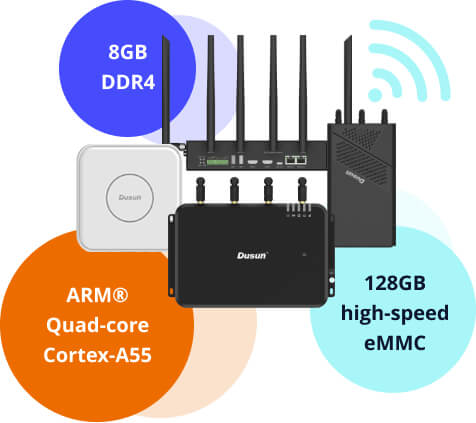
High-Precision Indoor Positioning
High-precision indoor positioning is important for various smart building functions, such as asset tracking, personnel tracking, access control, visitor flow, and proximity marketing. These solutions are critical in retail environments, warehouses, and offices, and we provide the required vertically integrated hardware to build these solutions.
Low-Powered Wireless Devices
We focus on providing low-powered end nodes that run on energy-efficient wireless protocols like ZigBee and BLE for the smart building solution. Our gateways are also energy efficient, and some, like the DSGW-210 edge computing gateway, have a lithium battery power backup to keep the network running if there is a power outage.
Third-Party Cloud Service Compatibility
Our gateways use the standard MQTT messaging protocol to communicate with applications, which enables quick docking with third-party cloud service providers.
24/7 FAE Support
Computer and IoT hardware can be a bit technical to deal with, especially if you decide to customize all aspects, including hardware design and firmware. But we have an FAE team that provides our customers with free technical support in real-time to sort these issues and hasten their time to market.
Off-The-Shelf vs. ODM: Which Option Is Better To Develop an Edge Computing Gateway for Smart Building Solutions
It depends on factors like the time-to-market and required customization. Off-the-shelf products, such as programmable gateways, significantly reduce the time-to-market. The product doesn’t have to go through the design, prototyping, manufacturing, and testing phases. All those have been done. But with ODM, the product will take some time to get to you and the market.
However, our ODM service ensures you get the most personalized product that you’ve conceptualized with your team to launch to market. We have over 20 years of experience in ODM services and a strong R&D team with extensive expertise in IoT, core algorithms, and industry-specific chip integration capabilities.
Either way, contact us with your order details, and we’ll advise you on the best way forward.









